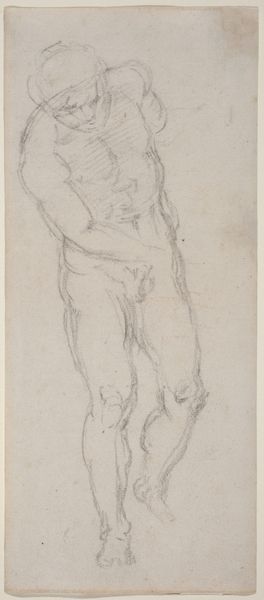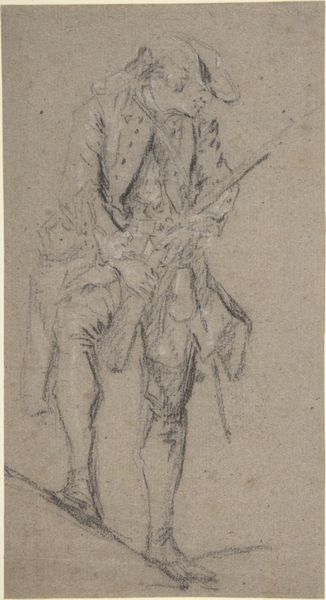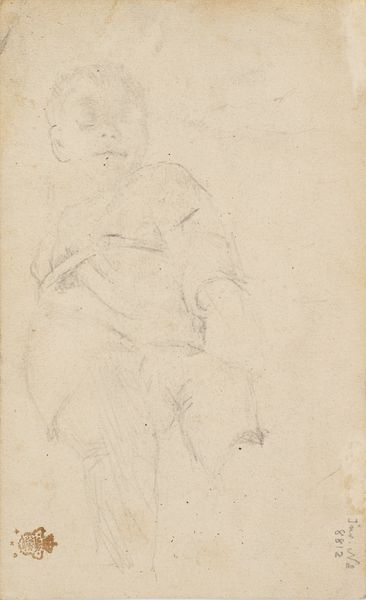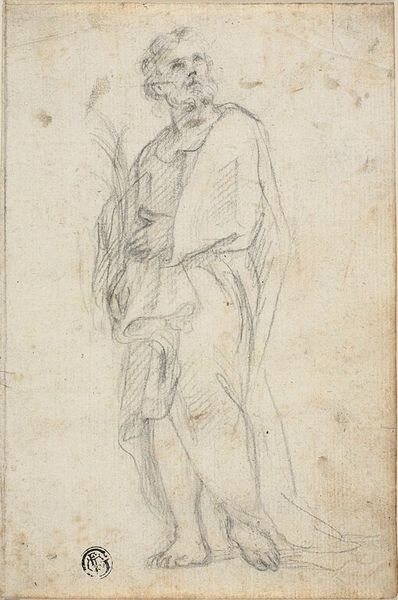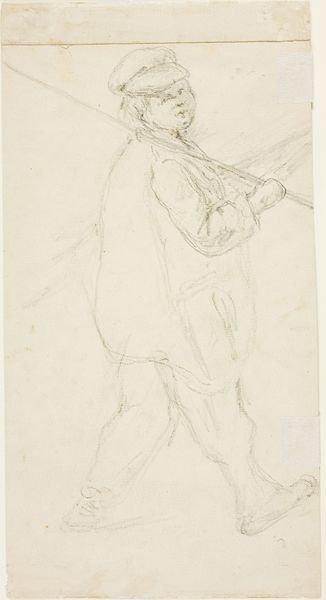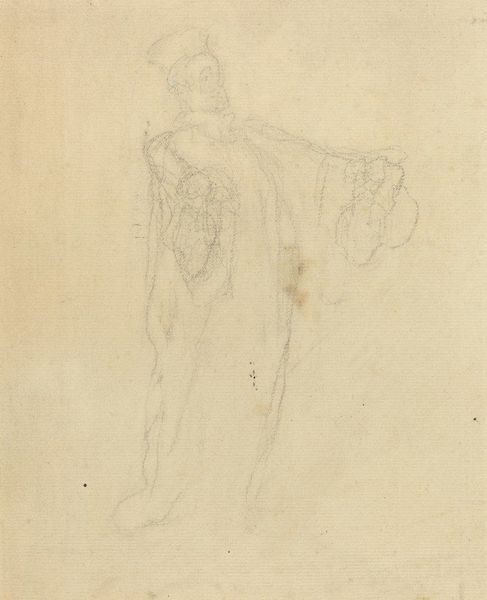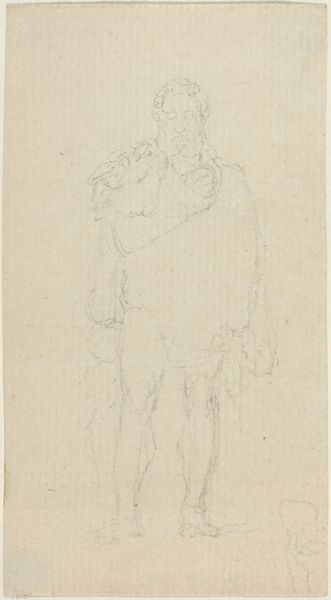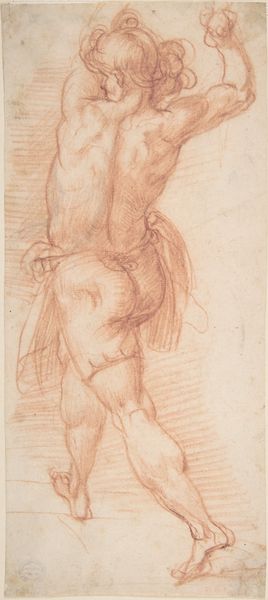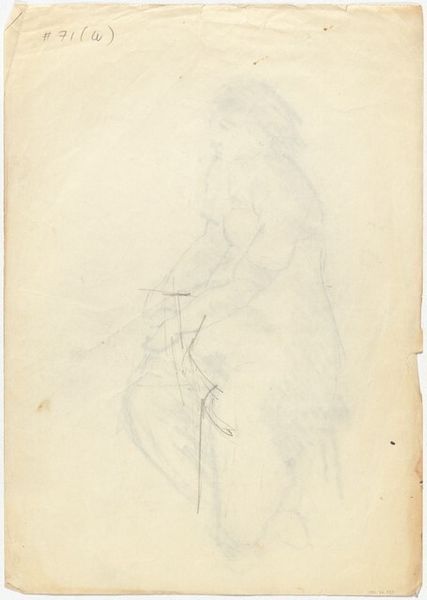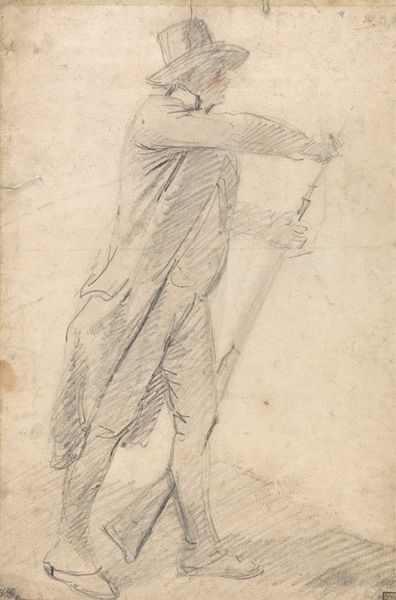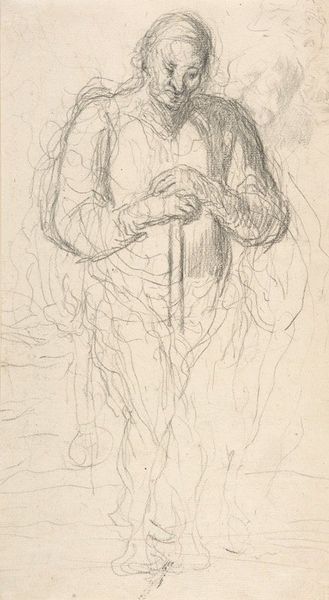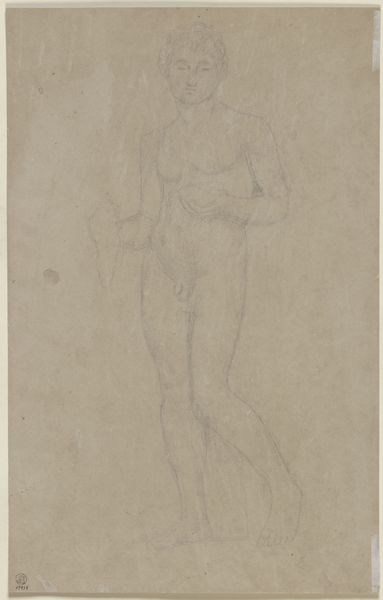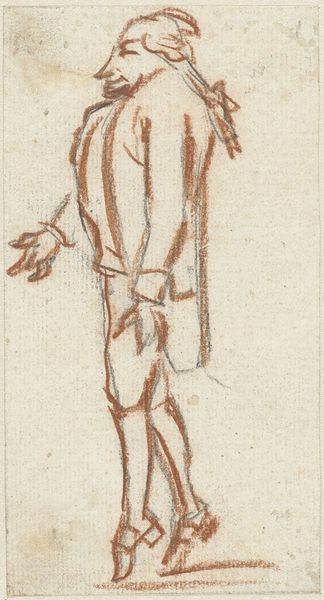![Male Nude [verso] by Michelangelo](/_next/image?url=https%3A%2F%2Fd2w8kbdekdi1gv.cloudfront.net%2FeyJidWNrZXQiOiAiYXJ0ZXJhLWltYWdlcy1idWNrZXQiLCAia2V5IjogImFydHdvcmtzLzQwZmQzMzcxLWVkNzUtNDE1OC04ZDZkLWIyNjVlYzkwYzhjNi80MGZkMzM3MS1lZDc1LTQxNTgtOGQ2ZC1iMjY1ZWM5MGM4YzZfZnVsbC5qcGciLCAiZWRpdHMiOiB7InJlc2l6ZSI6IHsid2lkdGgiOiAxOTIwLCAiaGVpZ2h0IjogMTkyMCwgImZpdCI6ICJpbnNpZGUifX19&w=1920&q=75)
drawing, pencil
#
drawing
#
figuration
#
form
#
11_renaissance
#
pencil
#
italian-renaissance
#
nude
Dimensions: overall: 23.4 x 10 cm (9 3/16 x 3 15/16 in.)
Copyright: National Gallery of Art: CC0 1.0
Curator: There's a raw vulnerability radiating from this Michelangelo drawing. I feel like I'm intruding on a very private moment, or perhaps catching a fleeting glimpse into the artist's mind. Editor: Indeed. Michelangelo's "Male Nude," sketched around 1560, reveals the artist's deep fascination with the human form as a vessel of expression and a reflection of divine proportion. Even as a quick preliminary study in pencil, it hums with latent power. What draws your eye first? Curator: It’s the legs, undeniably. The weight is beautifully shifted, yet they appear almost uncertain, as though caught mid-stride or battling their own gravity. To me it's more than mere anatomy; there’s an existential struggle suggested in the subtle wavering of the line, the vulnerability. Editor: The Renaissance had rediscovered Classical ideals, and in this sketch, we can glimpse the continuity between the antique statue and a very personal quest to depict not just a man, but *Man*, striving for perfection. I am interested by what the nude means when freed from religious context and presented as this type of aesthetic ideal. The symbols, while not as overt as say a cross or a halo, communicate just as potently. Curator: Symbols? Perhaps, but what about that very human tremor in his depiction of the shoulders, that hesitation in defining the face? Doesn't that tell us something more personal, something about Michelangelo grappling with the challenges of creation, with his own mortality? I think the “divine proportion” argument flattens the image a bit; it dismisses those flickering subtleties, you know? Editor: Not necessarily. I agree about the presence of these emotive flourishes, however those qualities can coincide with established iconography rather than contradicting them, allowing new narratives to emerge while honouring earlier belief systems. Curator: Interesting… it’s funny. Seeing this drawing is making me think about how even sketches are never really 'unfinished.' They contain their own truth, complete in that particular moment. Editor: Absolutely, each one acting like a historical marker that offers a glimpse into how cultures, generations and creators have found resolution through the symbolic language of figuration.
Comments
No comments
Be the first to comment and join the conversation on the ultimate creative platform.
